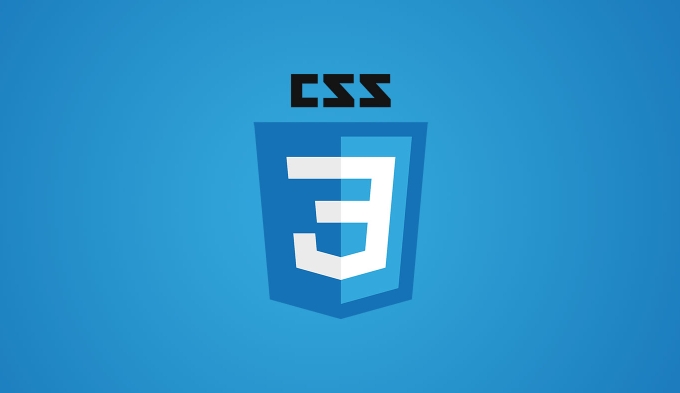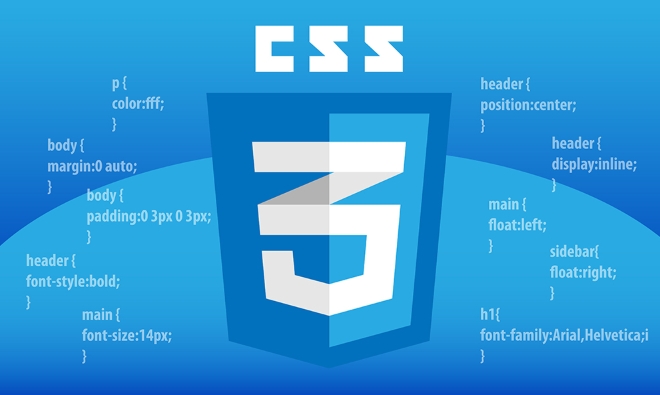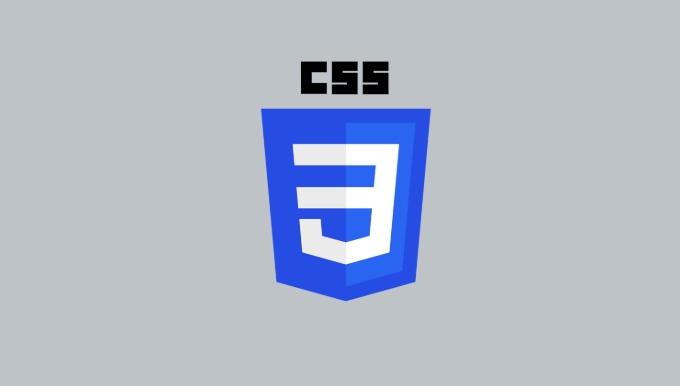 Web Front-end
Web Front-end
 CSS Tutorial
CSS Tutorial
 How to handle CSS in different browsers (cross-browser compatibility)
How to handle CSS in different browsers (cross-browser compatibility)
To deal with CSS compatibility issues, we need to start from four aspects: 1. Use Normalize to unify basic styles to avoid default style differences; 2. Query the support of CSS features and provide a fallback solution, add a manufacturer prefix or use Polyfill; 3. Ensure style consistency through developer tools and multi-browser testing; 4. Automatically add manufacturer prefixes to improve compatibility.

Handling the compatibility issues of CSS in different browsers is an inescapable link in front-end development. While modern browsers are becoming increasingly consistent in standard support, there are still some differences, especially in older browsers (such as IE) and mobile browsers. The key to solving these problems is to understand common differences, use the right tools, and plan compatibility strategies in advance.

1. Use Reset or Normalize stylesheets
Different browsers handle default styles (such as margin, padding, font size, etc.) differently, which will cause the page to look "disorganized" under different browsers.
suggestion:

- Use Normalize.css to unify the basic style, rather than simply and roughly using
* { margin: 0; padding: 0 }. - Normalize is done more granularly, retaining useful defaults while fixing common browser inconsistencies.
For example:
- Some browsers set different font-sizes for
<h1></h1>by default -
<button></button>,<input>and other elements have large differences in appearance in different browsers. Normalize can alleviate these effects
2. Pay attention to the support of CSS features in different browsers
Not all CSS properties work properly in all browsers, especially newer features, such as the use of gap in flex layouts, or the support for position: sticky .

suggestion:
- Use Can I use to query browser support for a CSS attribute
- For unsupported properties, consider:
- Provide a fallback solution (such as using margin instead of gap)
- Add vendor prefix (such as
-webkit-,-moz-), although many tools will automatically handle it now - Use Polyfill (such as polyfill for
flex-gap)
For example, if you use display: grid and gap , IE does not support it. At this time, you may need to change the layout method, or only enable gap in supported browsers.
3. Testing and debugging are the key
Even if you write a set of seemingly universal CSS, you can only know if it is really "universal" when you run it under different browsers.
suggestion:
- Use browser developer tools to see if element styles are overwritten or not effective
- Test in multiple browsers (Chrome, Firefox, Safari, Edge, even mobile Safari, WeChat built-in browser, etc.)
- Use tools such as BrowserStack and CrossBrowserTesting to perform cross-browser testing
Sometimes you will find:
- A selector priority performs differently under Firefox
- Some animations are stuck or cannot be triggered in Safari
- Mobile viewport zoom causes layout misalignment
These problems can only be discovered through actual testing.
4. Use Autoprefixer to automatically add vendor prefixes
Manually adding prefixes is too cumbersome and easy to miss. Now mainstream build tools support automatic prefix.
How to operate:
- If you are using PostCSS, install
autoprefixerandbrowserslistplugins - Configure
browserslistto specify the target browser scope, and the tool will automatically prefix the required attributes
For example, you wrote:
.example {
display: flex;
}PostCSS autoprefixer will be automatically converted to:
.example {
display: -webkit-box;
display: -ms-flexbox;
display: flex;
}This will be compatible in more browsers.
Basically that's it. Although CSS cross-browser compatibility issues are trivial, as long as you master several core ideas - unifying the initial style, checking support conditions, multiple tests, and automated processing, most problems can be avoided or solved quickly.
The above is the detailed content of How to handle CSS in different browsers (cross-browser compatibility). For more information, please follow other related articles on the PHP Chinese website!

Hot AI Tools

Undress AI Tool
Undress images for free

Undresser.AI Undress
AI-powered app for creating realistic nude photos

AI Clothes Remover
Online AI tool for removing clothes from photos.

Clothoff.io
AI clothes remover

Video Face Swap
Swap faces in any video effortlessly with our completely free AI face swap tool!

Hot Article

Hot Tools

Notepad++7.3.1
Easy-to-use and free code editor

SublimeText3 Chinese version
Chinese version, very easy to use

Zend Studio 13.0.1
Powerful PHP integrated development environment

Dreamweaver CS6
Visual web development tools

SublimeText3 Mac version
God-level code editing software (SublimeText3)
 CSS tutorial for creating loading spinners and animations
Jul 07, 2025 am 12:07 AM
CSS tutorial for creating loading spinners and animations
Jul 07, 2025 am 12:07 AM
There are three ways to create a CSS loading rotator: 1. Use the basic rotator of borders to achieve simple animation through HTML and CSS; 2. Use a custom rotator of multiple points to achieve the jump effect through different delay times; 3. Add a rotator in the button and switch classes through JavaScript to display the loading status. Each approach emphasizes the importance of design details such as color, size, accessibility and performance optimization to enhance the user experience.
 Addressing CSS Browser Compatibility issues and prefixes
Jul 07, 2025 am 01:44 AM
Addressing CSS Browser Compatibility issues and prefixes
Jul 07, 2025 am 01:44 AM
To deal with CSS browser compatibility and prefix issues, you need to understand the differences in browser support and use vendor prefixes reasonably. 1. Understand common problems such as Flexbox and Grid support, position:sticky invalid, and animation performance is different; 2. Check CanIuse confirmation feature support status; 3. Correctly use -webkit-, -moz-, -ms-, -o- and other manufacturer prefixes; 4. It is recommended to use Autoprefixer to automatically add prefixes; 5. Install PostCSS and configure browserslist to specify the target browser; 6. Automatically handle compatibility during construction; 7. Modernizr detection features can be used for old projects; 8. No need to pursue consistency of all browsers,
 Creating custom shapes with css clip-path
Jul 09, 2025 am 01:29 AM
Creating custom shapes with css clip-path
Jul 09, 2025 am 01:29 AM
Use the clip-path attribute of CSS to crop elements into custom shapes, such as triangles, circular notches, polygons, etc., without relying on pictures or SVGs. Its advantages include: 1. Supports a variety of basic shapes such as circle, ellipse, polygon, etc.; 2. Responsive adjustment and adaptable to mobile terminals; 3. Easy to animation, and can be combined with hover or JavaScript to achieve dynamic effects; 4. It does not affect the layout flow, and only crops the display area. Common usages are such as circular clip-path:circle (50pxatcenter) and triangle clip-path:polygon (50%0%, 100 0%, 0 0%). Notice
 What is the difference between display: inline, display: block, and display: inline-block?
Jul 11, 2025 am 03:25 AM
What is the difference between display: inline, display: block, and display: inline-block?
Jul 11, 2025 am 03:25 AM
Themaindifferencesbetweendisplay:inline,block,andinline-blockinHTML/CSSarelayoutbehavior,spaceusage,andstylingcontrol.1.Inlineelementsflowwithtext,don’tstartonnewlines,ignorewidth/height,andonlyapplyhorizontalpadding/margins—idealforinlinetextstyling
 Styling visited links differently with CSS
Jul 11, 2025 am 03:26 AM
Styling visited links differently with CSS
Jul 11, 2025 am 03:26 AM
Setting the style of links you have visited can improve the user experience, especially in content-intensive websites to help users navigate better. 1. Use CSS's: visited pseudo-class to define the style of the visited link, such as color changes; 2. Note that the browser only allows modification of some attributes due to privacy restrictions; 3. The color selection should be coordinated with the overall style to avoid abruptness; 4. The mobile terminal may not display this effect, and it is recommended to combine it with other visual prompts such as icon auxiliary logos.
 How to create responsive images using CSS?
Jul 15, 2025 am 01:10 AM
How to create responsive images using CSS?
Jul 15, 2025 am 01:10 AM
To create responsive images using CSS, it can be mainly achieved through the following methods: 1. Use max-width:100% and height:auto to allow the image to adapt to the container width while maintaining the proportion; 2. Use HTML's srcset and sizes attributes to intelligently load the image sources adapted to different screens; 3. Use object-fit and object-position to control image cropping and focus display. Together, these methods ensure that the images are presented clearly and beautifully on different devices.
 What are common CSS browser inconsistencies?
Jul 26, 2025 am 07:04 AM
What are common CSS browser inconsistencies?
Jul 26, 2025 am 07:04 AM
Different browsers have differences in CSS parsing, resulting in inconsistent display effects, mainly including the default style difference, box model calculation method, Flexbox and Grid layout support level, and inconsistent behavior of certain CSS attributes. 1. The default style processing is inconsistent. The solution is to use CSSReset or Normalize.css to unify the initial style; 2. The box model calculation method of the old version of IE is different. It is recommended to use box-sizing:border-box in a unified manner; 3. Flexbox and Grid perform differently in edge cases or in old versions. More tests and use Autoprefixer; 4. Some CSS attribute behaviors are inconsistent. CanIuse must be consulted and downgraded.
 Demystifying CSS Units: px, em, rem, vw, vh comparisons
Jul 08, 2025 am 02:16 AM
Demystifying CSS Units: px, em, rem, vw, vh comparisons
Jul 08, 2025 am 02:16 AM
The choice of CSS units depends on design requirements and responsive requirements. 1.px is used for fixed size, suitable for precise control but lack of elasticity; 2.em is a relative unit, which is easily caused by the influence of the parent element, while rem is more stable based on the root element and is suitable for global scaling; 3.vw/vh is based on the viewport size, suitable for responsive design, but attention should be paid to the performance under extreme screens; 4. When choosing, it should be determined based on whether responsive adjustments, element hierarchy relationships and viewport dependence. Reasonable use can improve layout flexibility and maintenance.





